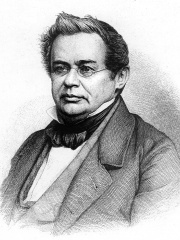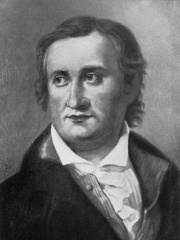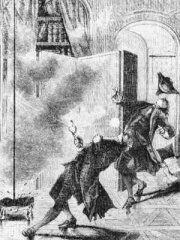


The Most Famous
PHYSICISTS from Estonia
This page contains a list of the greatest Estonian Physicists. The pantheon dataset contains 851 Physicists, 3 of which were born in Estonia. This makes Estonia the birth place of the 28th most number of Physicists behind Australia, and Pakistan.
Top 3
The following people are considered by Pantheon to be the most legendary Estonian Physicists of all time. This list of famous Estonian Physicists is sorted by HPI (Historical Popularity Index), a metric that aggregates information on a biography's online popularity.

1. Emil Lenz (1804 - 1865)
With an HPI of 74.36, Emil Lenz is the most famous Estonian Physicist. His biography has been translated into 50 different languages on wikipedia.
Heinrich Friedrich Emil Lenz (German: [ˈeːmɪl ˈlɛnts]; also Emil Khristianovich Lenz; Russian: Эми́лий Христиа́нович Ленц; 24 February [O.S. 12 February] 1804 – 10 February [O.S. 29 January] 1865), usually cited as Emil Lenz or Heinrich Lenz in some countries, was a Russian physicist of Baltic German descent who is most noted for formulating Lenz's law in electrodynamics in 1834.

2. Thomas Johann Seebeck (1770 - 1831)
With an HPI of 65.87, Thomas Johann Seebeck is the 2nd most famous Estonian Physicist. His biography has been translated into 29 different languages.
Thomas Johann Seebeck (German: [ˈtoːmas ˈjoːhan ˈzeːbɛk]; 9 April 1770 – 10 December 1831) was a German physicist who observed a relationship between heat and magnetism. Danish physicist Hans Christian Ørsted later called this phenomenon the thermoelectric effect.

3. Georg Wilhelm Richmann (1711 - 1753)
With an HPI of 63.05, Georg Wilhelm Richmann is the 3rd most famous Estonian Physicist. His biography has been translated into 23 different languages.
Georg Wilhelm Richmann (Russian: Георг Вильгельм Рихман; 22 July [O.S. 11 July] 1711 – 6 August [O.S. 26 July] 1753) was a Russian physicist of Baltic German origin who did pioneering work on electricity, atmospheric electricity, and calorimetry. He died by electrocution in St. Petersburg when struck by apparent ball lightning produced by an experiment attempting to ground the electrical discharge from a storm.
People
Pantheon has 3 people classified as Estonian physicists born between 1711 and 1804. Of these 3, none of them are still alive today. The most famous deceased Estonian physicists include Emil Lenz, Thomas Johann Seebeck, and Georg Wilhelm Richmann.
Deceased Estonian Physicists
Go to all RankingsEmil Lenz
1804 - 1865
HPI: 74.36
Thomas Johann Seebeck
1770 - 1831
HPI: 65.87
Georg Wilhelm Richmann
1711 - 1753
HPI: 63.05
Overlapping Lives
Which Physicists were alive at the same time? This visualization shows the lifespans of the 3 most globally memorable Physicists since 1700.

